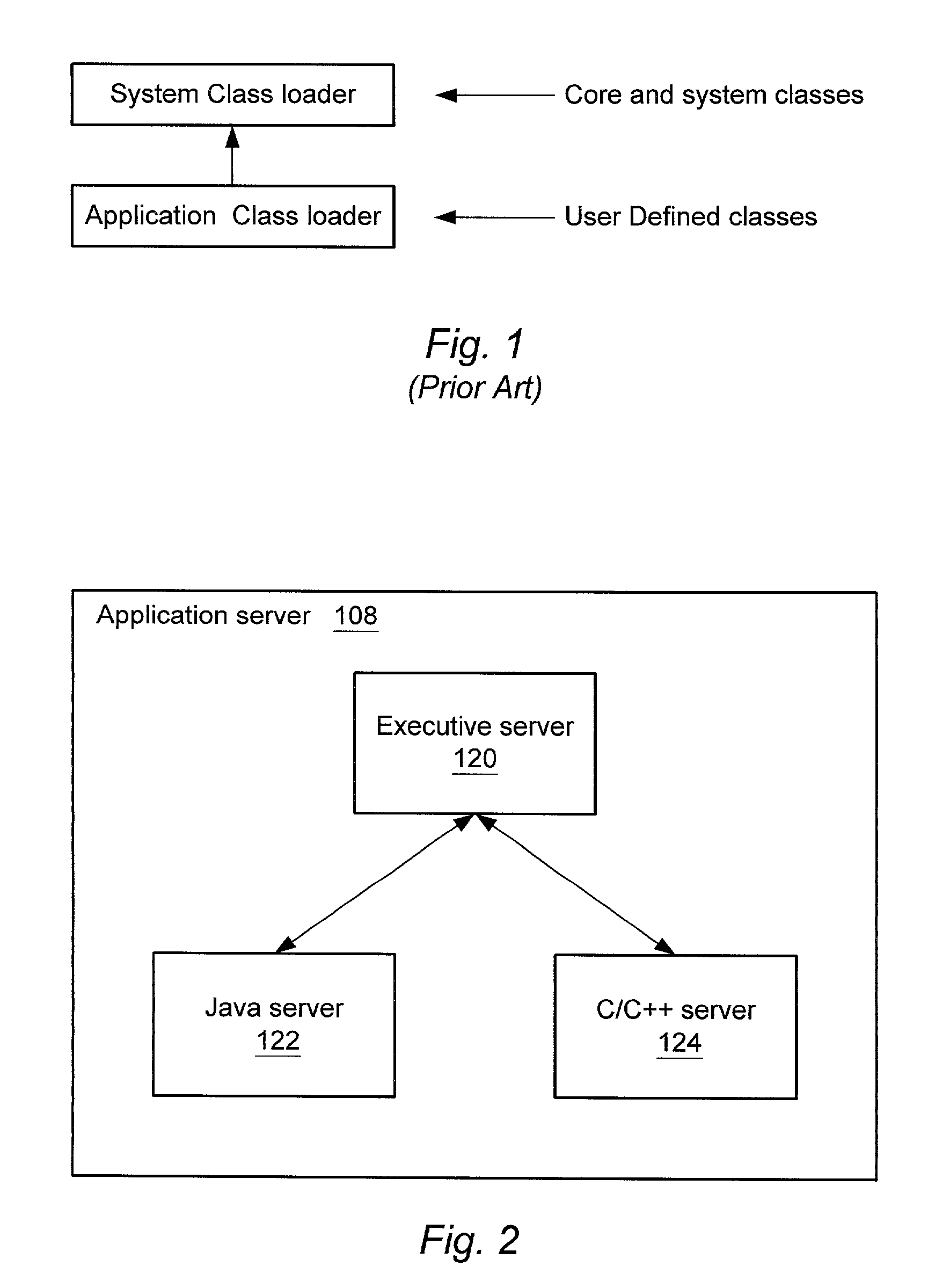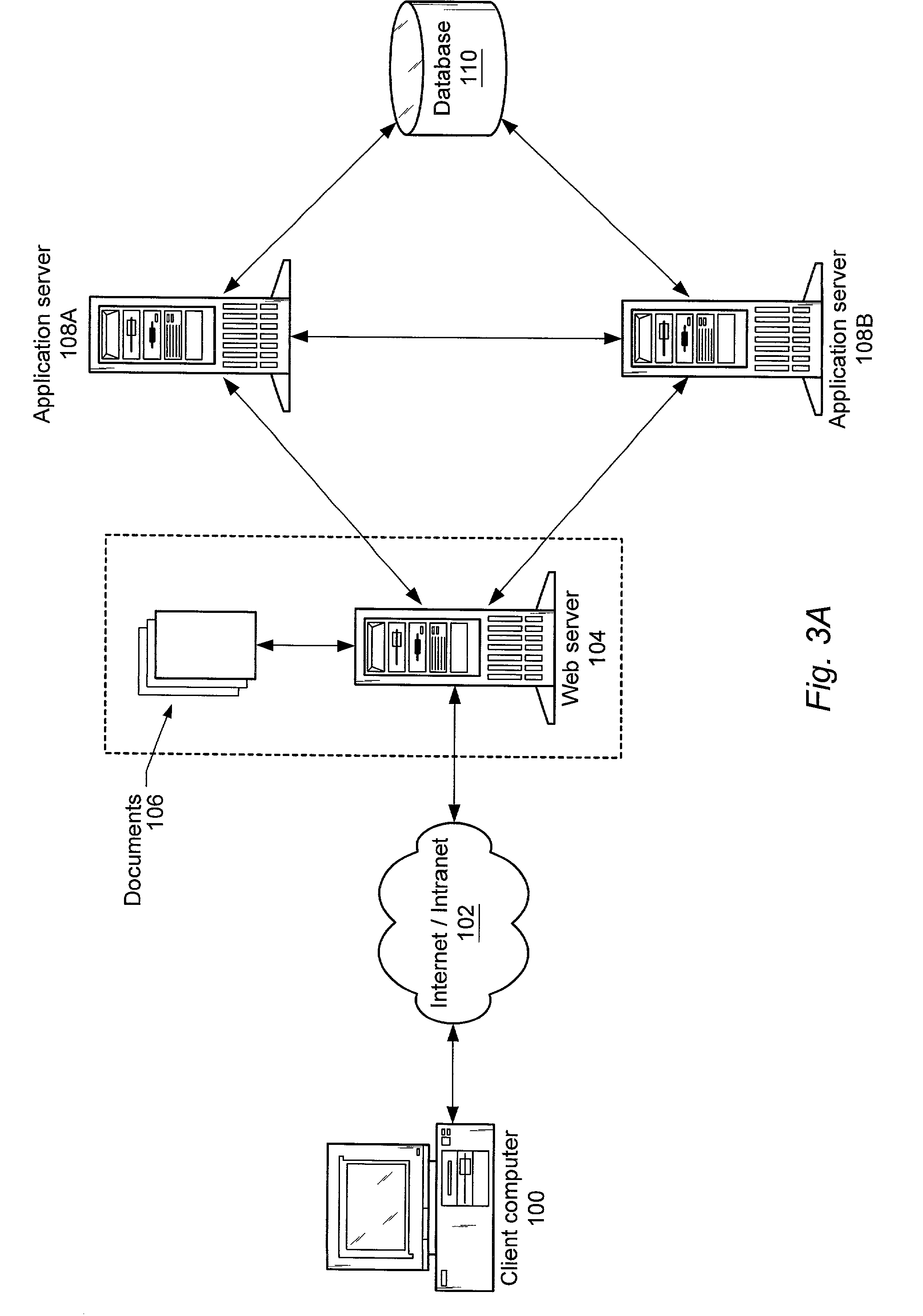Class dependency graph-based class loading and reloading
a class dependency and graph-based technology, applied in the field of computer software, can solve the problems of not being able to take the server offline to get these changes reflected, affecting the performance of the application, and so as to achieve the effect of reducing the number of edges
- Summary
- Abstract
- Description
- Claims
- Application Information
AI Technical Summary
Benefits of technology
Problems solved by technology
Method used
Image
Examples
Embodiment Construction
[0045]Embodiments of a system and method for providing class dependency graph-based class loading and reloading may be used to segregate namespaces in a graph-centric way, and may provide a set of normalized topologies that may be used to efficiently support hot-swapping of programmatic logic such as classes, applets, helpers and beans, among other applications. Hot-swapping refers to the replacement (also referred to as “reloading”) of the programmatic logic with similar programmatic logic while software and / or hardware using the program logic remains in operation. In this document, the term “class” may include the notion of various types of programmatic logic, logical units, and components, including programming language (e.g. Java™) classes, modules, applets, servlets, helpers and beans, among others, that may be “swappable” or reloadable in an application.
[0046]Embodiments may provide a domain-independent, flexible and robust namespace segregation technique that may be independe...
PUM
 Login to View More
Login to View More Abstract
Description
Claims
Application Information
 Login to View More
Login to View More - R&D
- Intellectual Property
- Life Sciences
- Materials
- Tech Scout
- Unparalleled Data Quality
- Higher Quality Content
- 60% Fewer Hallucinations
Browse by: Latest US Patents, China's latest patents, Technical Efficacy Thesaurus, Application Domain, Technology Topic, Popular Technical Reports.
© 2025 PatSnap. All rights reserved.Legal|Privacy policy|Modern Slavery Act Transparency Statement|Sitemap|About US| Contact US: help@patsnap.com



